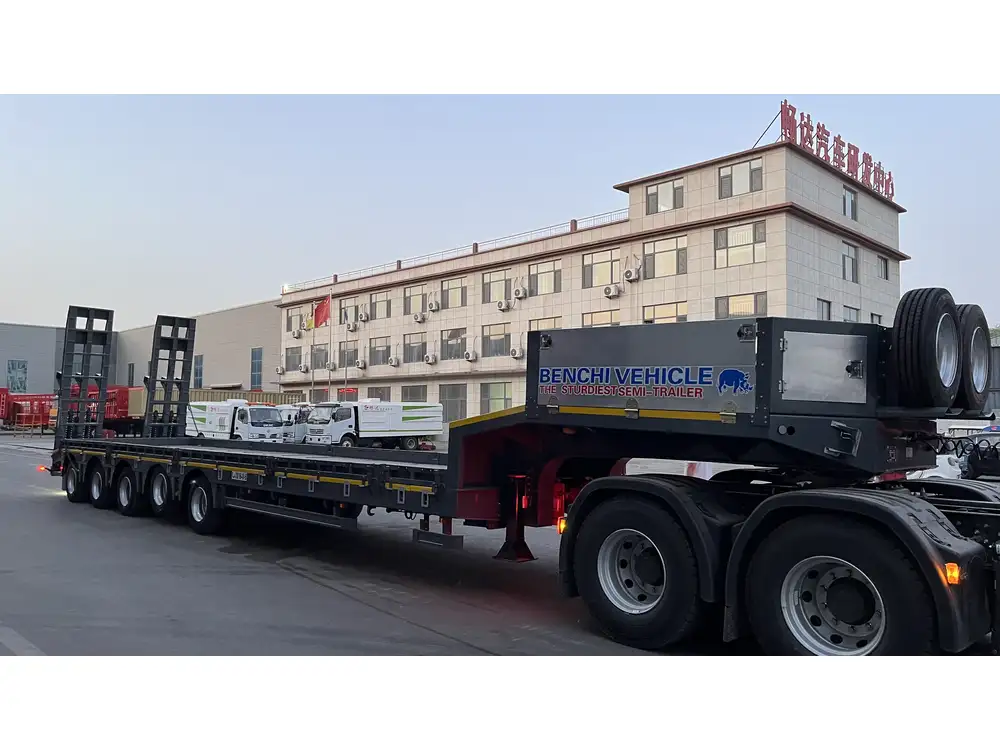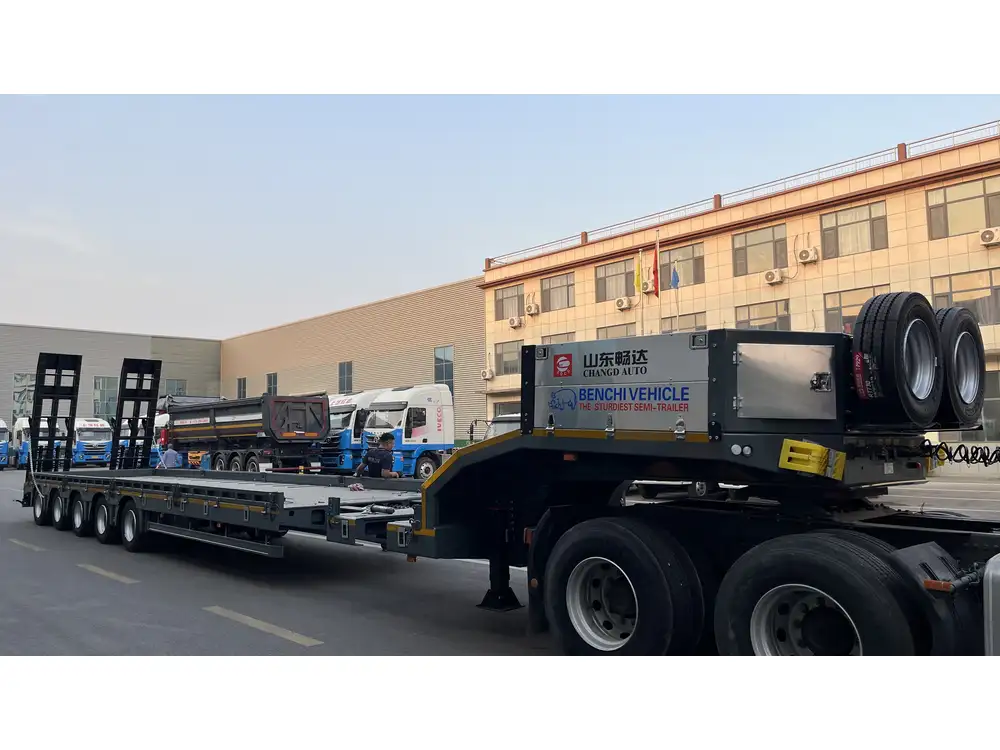Introduction
Unloading a tanker trailer is a critical process in the transportation and logistics industry. Proper techniques and safety measures must be adopted to ensure efficiency and reduce potential hazards associated with the handling of liquid cargo. In this article, we will delve into the intricate steps involved in unloading a tanker trailer, emphasizing safety protocols, equipment, and best practices. This guide will serve as a valuable resource for drivers, operators, and logistics personnel who handle bulk liquid transportation.
Understanding the Types of Tanker Trailers
Before diving into unloading procedures, it is crucial to comprehend the different types of tanker trailers and their specific characteristics. Tanker trailers can be categorized based on the cargo they transport. Here are the main types:
| Type of Tanker | Cargo | Special Features |
|---|---|---|
| Chemical Tankers | Chemicals and Liquids | Specialized linings and materials |
| Fuel Tankers | Gasoline, Diesel | Double-hulled for safety and security |
| Food Grade Tankers | Edible liquids | Sanitary designs and regulations compliance |
| Cement Tankers | Dry bulk cement | Pneumatic systems for unloading |
| Water Tankers | Potable and non-potable water | Standards for drinking water compliance |
Familiarity with the type of tanker you’re unloading enhances understanding of the specific handling requirements associated with each cargo.
Preparing for the Unloading Process

Safety First
Prior to unloading, it is critical to ensure that all safety measures are in place. Unloading a tanker trailer poses several hazards, including spills, exposure to hazardous materials, and equipment failure. Here are safety measures to follow:
Personal Protective Equipment (PPE): Ensure that all personnel involved wear appropriate PPE, including gloves, goggles, and, when necessary, respirators.
Site Inspection: Conduct a thorough inspection of the unloading area. Look for potential hazards such as uneven surfaces, overhead clearances, and accessibility.
Emergency Protocols: Familiarize all team members with emergency protocols in case of spills or accidents. Emergency contact numbers should be readily available.
Equipment Checklist
Make sure all the necessary equipment is available and in good condition before beginning the unloading process. This may include:
- Hoses and Couplings: Make sure the hoses are compatible with the type of liquid being unloaded and are leak-proof.
- Pump Systems: Determine if a pump is necessary for the unloading process, depending on the viscosity of the fluid.
- Valves and Connectors: Inspect all valves and connectors; they should be in proper working order to prevent leaks.
- Grounding Equipment: Especially for flammable liquids, grounding tools will help prevent static electricity buildup.
Documentation
Prior to unloading, confirm that all necessary paperwork is in order, which may include:
- Bill of lading
- Material Safety Data Sheets (MSDS)
- Hazardous Waste manifests (if applicable)

Detailed Steps for Unloading a Tanker Trailer
Step 1: Positioning the Tanker
To commence unloading, park the tanker trailer on level ground and ensure it is securely chocked. This prevents movement during the unloading process. When unloading flammable liquids, maintain a safe distance from ignition sources.
Step 2: Connect the Hoses
Once the tanker is securely positioned, connect the unloading hoses. Follow these guidelines:
- Check Compatibility: Ensure that the hoses are compatible with the cargo type.
- Secure Connections: Use proper couplings to make sure there are no gaps at the connection points to prevent leaks.
- Ground the Tanker: Use anti-static grounding cables to discharge any accumulated static electricity, crucial when handling flammable substances.

Step 3: Open Valves
Open the necessary valves to initiate the flow of liquid into the designated storage tank. This should generally be done from the top of the tanker to prevent any backflow.
Step 4: Monitor the Unloading Process
Keep a close eye on the unloading process. Here’s what to be vigilant about:
- Flow Rate: Ensure that the flow rate is consistent and within safe limits. Adjust the pump speed if necessary.
- Visual Monitoring: Check for any leaks or spills during the process. If any issues arise, stop the unloading immediately and address the problem.
- Signal Communication: Use established hand signals or radios to communicate with colleagues. Clear communication is essential to maintain safety.
Step 5: Complete Unloading
Once unloading is complete, follow these steps to finish the process:
- Close Valves: Once the desired amount of liquid has been transferred, close all valves securely to prevent any spillage.
- Disconnect Hoses: Carefully disconnect the hoses, ensuring that any residual liquid is disposed of properly to minimize spills.
- Clean Up Spills: If any spills have occurred, use an appropriate absorbent material to clean it up immediately. Dispose of any contaminated materials in accordance with safety regulations.

Step 6: Documentation and Reporting
After unloading, complete all necessary documentation to reflect the unloading process accurately. This may include:
- Unloading Report: Document the amount unloaded, time taken, and any unusual occurrences.
- Punctuality Logs: Mark the timing of the unloading to facilitate inventory tracking.
Post-Unloading Protocols
Inspection of Tanker Equipment
Once unloading is complete, perform an inspection of the tanker and equipment. This includes:
- Visual Inspection for Damage: Look for any signs of wear or damage to hoses and couplings.
- Functional Check: Ensure that all equipment is functioning correctly and plan any necessary maintenance actions.

Continuous Training and Updates
Regular training for all personnel involved in the unloading process is crucial in maintaining safety standards. Implement periodic refresher courses and stay updated on industry regulations and safety practices.
Common Challenges and Solutions
Challenge 1: Spills During Unloading
Solution: To minimize spills, ensure the unloading area is well-drained and utilize spill containment trays that capture leaks right away.

Challenge 2: Equipment Failure
Solution: Regularly maintain and inspect all equipment. In case of an equipment failure during unloading, immediately notify all personnel and follow emergency protocols.
Challenge 3: Communication Breakdowns
Solution: Enforce standardized communication protocols. Use hand signals in addition to verbal communication to avoid misunderstandings.
Best Practices for Efficient Unloading
- Plan Ahead: Always have an unloading plan that anticipates various scenarios. This mitigates risks and enhances efficiency.
- Prioritize Training: Ensure that all employees handling the process are thoroughly trained and understand the significance of each step.
- Use Technology: Modern unloading systems often incorporate technology for better monitoring and control. Consider investing in digital solutions for efficiency.

Conclusion
Unloading a tanker trailer involves a multi-faceted approach requiring careful planning, attention to detail, and unwavering attention to safety protocols. From the moment you reposition the tanker to the final cleanup after unloading, each step is critical to ensure a smooth, efficient, and safe operation. By adhering to the guidelines provided in this comprehensive guide, drivers and personnel can mitigate risks and enhance overall efficiency in the unloading process. When handled with professionalism and diligence, unloading operations can be both effective and safe, ultimately contributing to the seamless logistics that keep our industries running efficiently.



